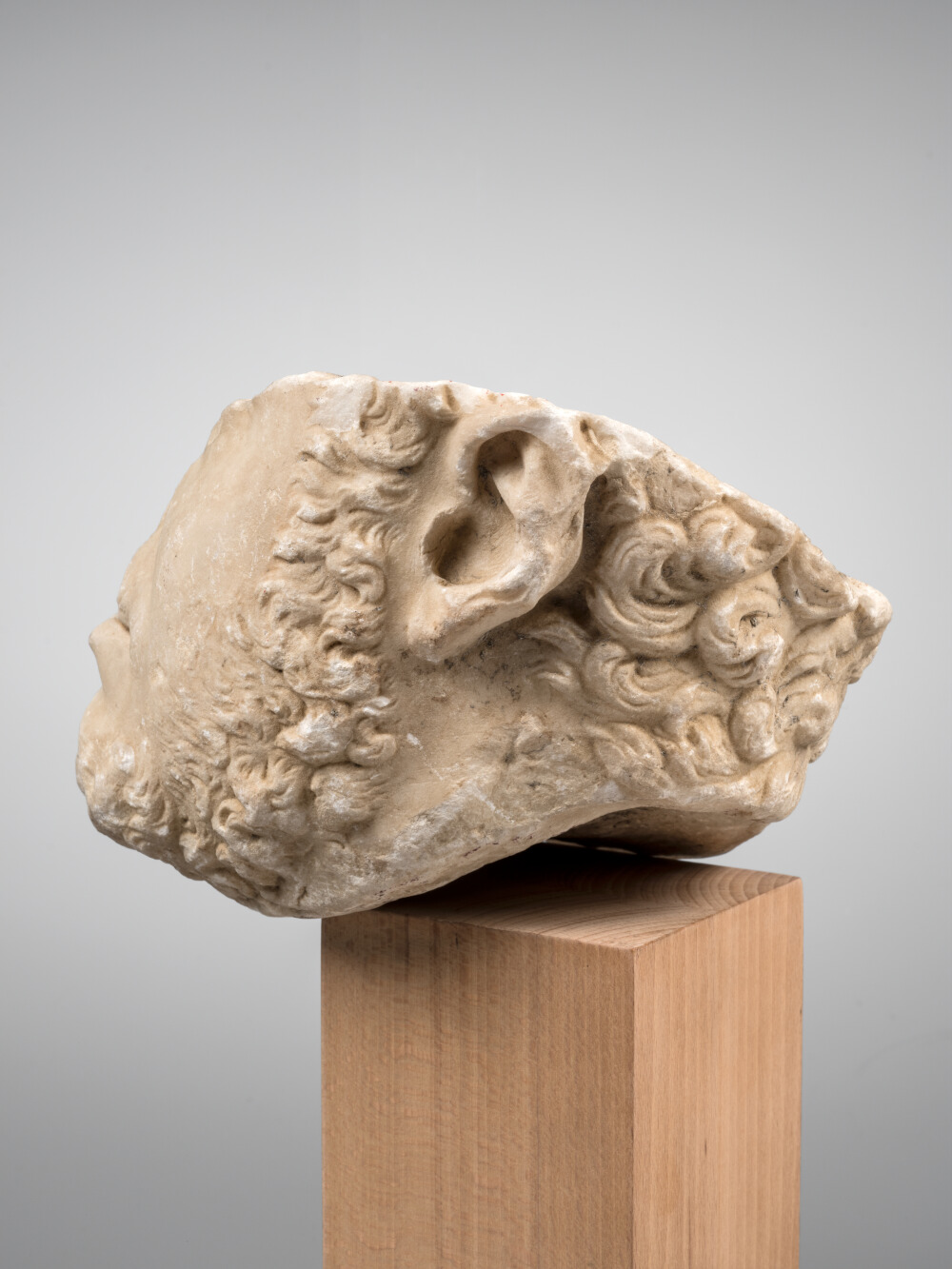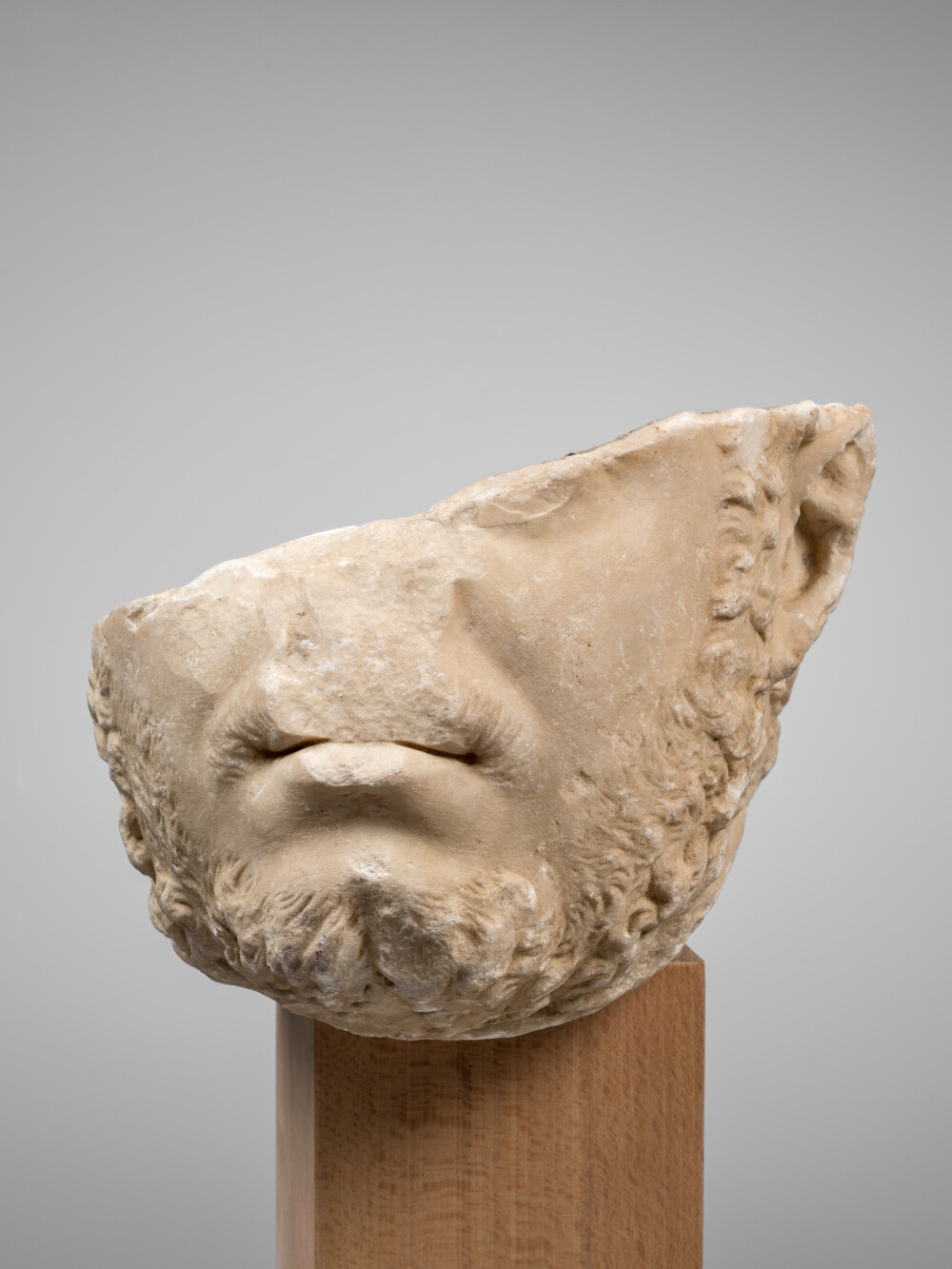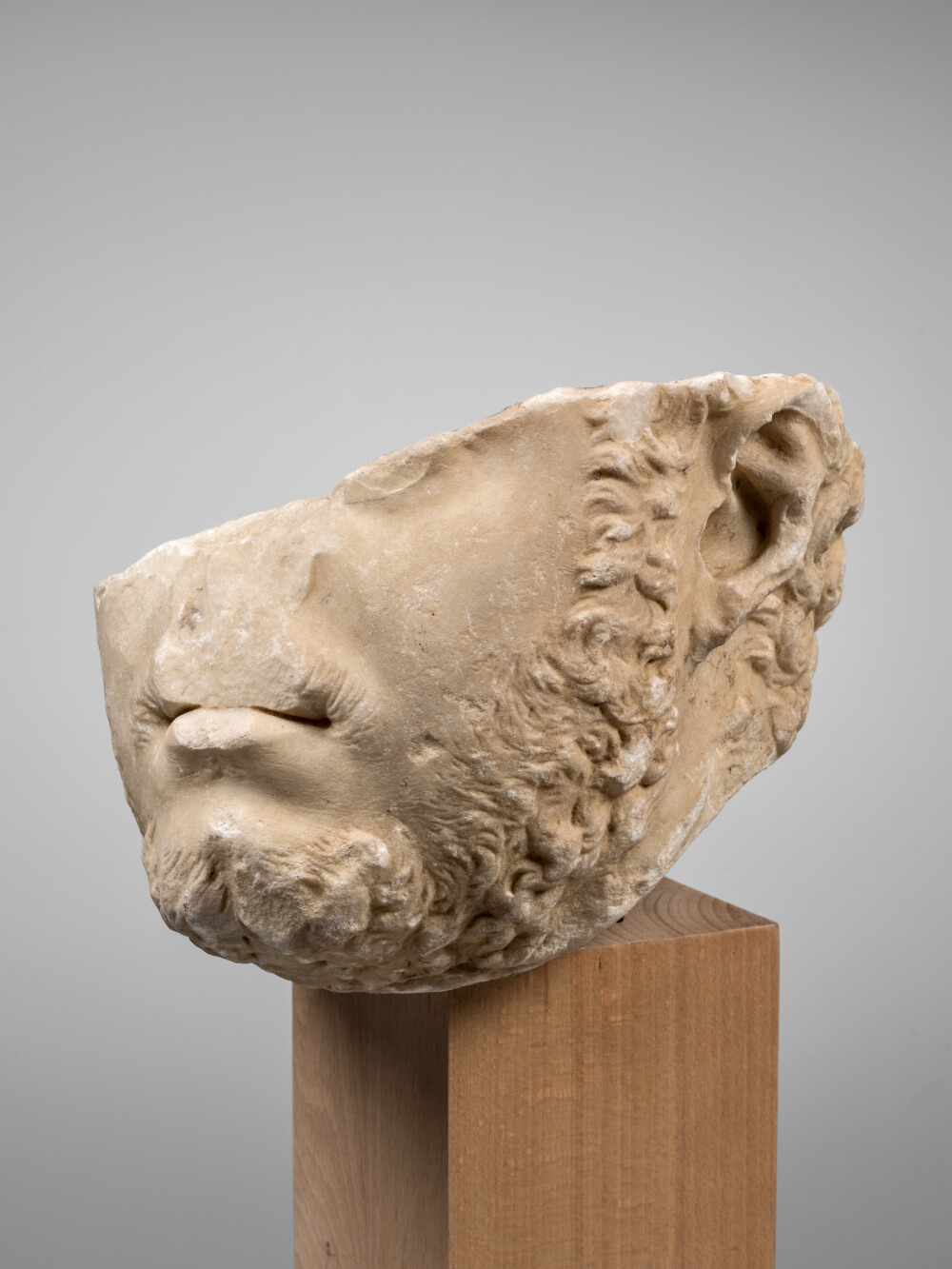Incomplete portrait of Caracalla



- Biographic data
- 188 - 217
Son of Septimius Severus and Julia Domna, brother of Geta. Emperor de 211 à 217 - Date de création
- 211 - 217
- Type
- Of the « Alleinherrscher » type
- Material
- Marble
- Dimensions
- H. 16 x l. 19 x P. 22 (cm)
- Inventory number
- 2000.32.1
- Photo credits
- Daniel Martin
Although now incomplete, the quality of this portrait is obvious in the smallest remaining details: the beard, locks of hair, shape of the lips, as well as the subtle rendering of the area around the inner corner of the eye. Everything points to the work of one of the finest official workshops in Rome. This is hardly surprising as the portraits of this emperor that belong to the « Alleinherrscher », the « prototype », or « Leitstücke » type series (those closest to the prototype or « Urbild » originally created by the imperial workshop) are now considered to be among the best portraits to have been made at the time. With this model, the artist summoned to the Court to create the « Urbild », produced one of the most impressive types ever made during antiquity, so much so that it has been referred to as the « Master Caracalla » portrait S. Wood, Roman Portrait Sculpture, 217-260 A.D. : The Transformation of an Artistic Tradition (Columbia Studies in the Classical Tradition), Leiden, 1986, p. 49.. In fact, the famous  bust of Brutus by Michelangelo was inspired by this type, the sudden movement of the head being associated with a look of fury to demonstrate the character’s ardour K. Fittschen, « Sul ruolo del ritratto antico nell’arte italiana, » Memoria dell’antico nell’arte italiana, 2. I generi e i temi ritrovati, Turin, 1985, pp. 381–412, p. 410-411, fig. 385-390 ; J.-C. Balty, « Universalité du portrait antique, » Bulletin de la Classe des Beaux-Arts, 5e série, 68, 1986, pp. 286–352, en partic. p. 324, pl. XI, 3-4..
bust of Brutus by Michelangelo was inspired by this type, the sudden movement of the head being associated with a look of fury to demonstrate the character’s ardour K. Fittschen, « Sul ruolo del ritratto antico nell’arte italiana, » Memoria dell’antico nell’arte italiana, 2. I generi e i temi ritrovati, Turin, 1985, pp. 381–412, p. 410-411, fig. 385-390 ; J.-C. Balty, « Universalité du portrait antique, » Bulletin de la Classe des Beaux-Arts, 5e série, 68, 1986, pp. 286–352, en partic. p. 324, pl. XI, 3-4..
The workmanship of this portrait unearthed in Chiragan is similar to that of the famous portrait displayed at the Naples National Archaeological Museum: similar rendering of the mouth - with an even shorter but just as fleshy lower lip, in Toulouse - and tufts of beard that show « the same use of an extremely fine trepanning tool, that has been used to breathe life and vitality into the curls, the details of which are simply carved. » E. Rosso, L’image de l’empereur en Gaule romaine : portraits et inscriptions (Archéologie et histoire de l’art), Paris, 2006, p. 480. The subtle restitution of the curves of the face, and the volume given to the short curls of the beard punctuated with drill holes are also found on a lovely head in Oslo (former Fett collection), that belongs to the type that immediately preceded it (the « Thronfolgertypus II », or « Successor Type II ») S. Sande, « Greek and Roman Portraits in Norwegian Collections, » Acta ad Archaeologiam et Artium Historiam pertinentia, 10, 1991, p. 101, en partic. no 63 p. 77-78, pl. LXII.. The stylistic connection between this specimen in Oslo and the one found in Chiragan is particularly clear: Septimius Severus had artificially attached himself to the previous Antonine dynasty, which immediately resulted in his two children, Caracalla and Geta, being depicted as actual little Antonine princes in their first portraits. Yet all the arguments that subsequently attempted to justify this filiation were gradually eroded. Thus, based on copies of this « Successor Type II », during the last years of the emperor’s reign, the portraits essentially aim to highlight the Concordia Augustorum; that is the (apparent) concord between the Augustans (confirmed on the reverse side of coins by the legend CONCORDIA AVGVSTORVM or CONCORDIAE AVGG) F. Leitmeir, « ‘Geta’s Büste kaufe ich nicht’. Neues zur Typologie der Bildnisse der severischen Prinzen Geta und Caracalla, » Münchner Jahrb_ur der bildenden Kunst, 57, 2007, pp. 10–16, en partic. p. 15-16 et no 57.. A profound change took place, far from the image of emperors during the previous century, from Hadrian to Septimius Severus. The revolutionary creation of the « Master Caracalla » portrait gave concrete expression to this change in the sovereign’s image. Caracalla was indeed the first of the « military emperors », and this type of portrait, which so profoundly broke away with the usual physiognomy of 2nd century emperors, was to have a lasting influence on the iconography of several of his successors.
According to J.-C. Balty 2020, Les Portraits Romains : L’époque des Sévères, Toulouse, p. 146-150.
Bibliography
To cite this notice
Capus P., "Incomplete portrait of Caracalla", in The sculptures of the roman villa of Chiragan, Toulouse, 2019, online <https://villachiragan.saintraymond.toulouse.fr/en/ark:/87276/a_2000_32_1>.